8676? German army Wehrmacht General Assault Badge post WW2 1957 pattern DEUMER
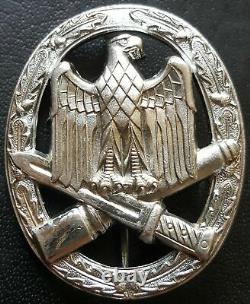
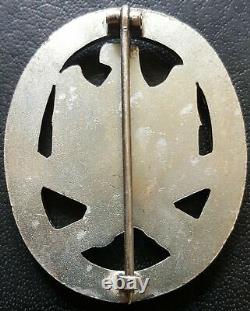
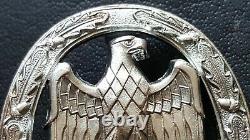
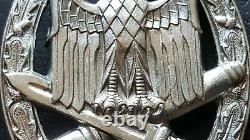
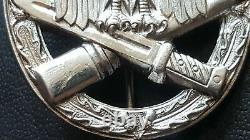
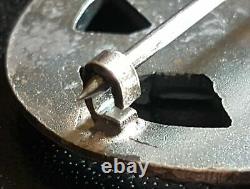
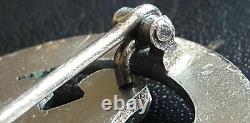
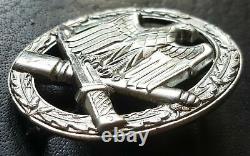
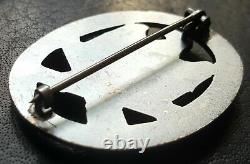
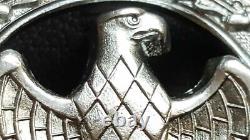
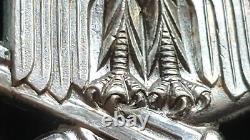
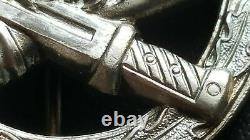


Original German General Assault Badge - 1957 pattern, post WW2, VERY NICE CONDITION - INTACT PIN DEVICE / VERY GOOD DEUMER MADE EXAMPLE, VERY ATTRACTIVE AND DETAILED BADGE WITH POLISHED HIGHLIGHTS, A BEAUTIFUL PIECE FROM A RARE MAKER. In 1957 the West German government authorised replacement Iron Crosses with an Oak Leaf Cluster in place of the swastika, similar to the Iron Crosses of 1813, 1870, and 1914, which could be worn by World War II Iron Cross recipients.
The 1957 law also authorised de-Nazified versions of most other World War II-era decorations (except those specifically associated with Nazi Party organizations, such as SS Long Service medals, or with the expansion of the German Reich, such as the medals for the annexation of Austria, the Sudetenland, and the Memel region). The main government contract to manufacture and supply these new de-nazified WW2 1957 official decorations went to the world famous German firm Steinhauer & Lueck, Luedenscheid Germany.
Knights Crosses, Iron Crosses, Wound Badges, Tank Assault Badges etc were re-designed by Steinhauer & Lück - often with the oak-leaf spray replacing the swastika, with S&L having the sole patent rights to all WW2 1957 German decorations. S&L did not have the whole monopoly on medal making, other famous firms such as Deschler & Sohn, BH Maher and Juncker also manufactured these new German decorations. Lüdenscheid is situated between the cities Dortmund and Bonn.
It was here that one of the youngest medal firms was founded in 1889 by August Steinhauer and Gustav Adolf Lück. The first production began in a cellar, the customer base continued to increase. A property was bought at 51 Hochstrasse which is still home for this famous company today.
During WW2 Steinhauer & Lück produced medals and badges, like the famous Knights Cross and many other types of medals and badges. In 1957 this company was awarded the contract to produce all the newly re-designed legal WW2 1957 de-nazified decorations, plus the contract to manufacture all of Germany's official decorations including Germany's highest order the Bundesverdienstkreuz. Only a very limited number of original WW2 1957 medals are still produced, mainly Iron Crosses, German Cross Gold & Silver & Wound Badges and are considered 100% genuine by the German Government.
General Assault Badge - General von Brauchitsch instituted the General Assault Badge on January 1st, 1940. The badge, designed by the firm of Ernst Peekhaus of Berlin, was to be awarded to those German soldiers who participated in infantry attacks but were not part of infantry units and therefore did not quality for the Infantry Assault Badge. The General Assault Badge consisted of an oval disk that measured 53mm by 42mm and was 6mm wide. The disk had raised edges and fine pebbling in the background, with and wreath of oak leaves made of 5 parts laid on each side. This oak leave wreath begins at two acorns located at the base of the badge.The protruding stick grenade and bayonet separate the first two wreaths, while acorns fill the last two separations. The center feature consists of a Wehrmacht Eagle clutching a swastika in its talons.
The eagle surmounts a crossed bayonet and a stick grenade, which as mentioned above protruded into the oval disk. The reverse may either be solid or hollow, with a pin and catch serving as the devise that held the badge to the uniform.
As with most badges the quality of detail in the General Assault Badge is mostly standard, but the quality of materials was not always the same and as a result some of the badges have lost their finish with the passing of time, yielding a gray appearance. For more information on the construction of the General Assault Badge please see the Badge Construction Technique page. The award was most often presented in plain paper packets, that varied in colors, with the name of the award printed on the outside, or in a simple cellophane packet. As with most badges, the General Assault Badge was worn on the left breast pocket of the tunic as badge was presented with an award document that had the details of the recipient, but no official mention of the deed that earned the award.The General Assault badge was presented to engineers (who it was originally designed for), as well as members of the artillery, anti-tank, and anti-aircraft units that served along with the infantry in the conduct of an assault. Also eligible were medical personnel who treated battlefield wounded. In addition, the badge was presented for the single-handed destruction of eight tanks or armored vehicles until the institution (in March of 1942) of The Special Badge for Single Handed Destruction of a Tank. Specific criteria was as follows: the recipient must not be eligible for the Infantry Assault Badge, to have taken part in three infantry or armored assaults on three different days, to have taken part in three infantry or armored indirect assaults on three different days, to have been wounded while fulfilling the second or third requirement, to have earned a decoration while fulfilling the second or third requirement. As the war went on, the high command recognized the need for a higher grade of this decoration to be presented to the increasing number of seasoned veterans, and on June 6th 1943, four new grades were introduced.
The badge would now be presented to veterans in 25, 50, 75 and 100 classes. The first two are rare but attainable, meaning that they come for sale at regular dealers from time to time, while the latter two are rare in the extreme.
The 25 and 50 badge were similar in style, design and construction. They consisted of an oval wreath of oak leaves similar to the unnumbered badge but larger, measuring 58mm by 48mm with a width of 7mm. At the base of the oval is a box, measuring 10mm by 8mm, with another box measuring 8mm by 6 mm inside of it. In the smaller box was the Arabic number "25" or "50", depending of course on the grade.
The central design was blackened, while the wreath was silvered. The central motive was again the eagle clutching a swastika on its talons, surmounting a crossed grenade and bayonet. This center design has a black oxidized finish, and was from a different striking which was held on the oval by way of four ball rivets.These badges were slightly different than the ones described this case, the oak leaves wreaths constituted the inner and outer edge of the oval that measured 56mm by 49mm, and was 7.5mm in width. The box at the base of the circle measured 10mm by 8mm, but the inner box measured 9mm by 7mm, a slight e the box were the numbers "75" or "100", depending on the grade. The central design was the familiar eagle clutching the swastika surmounting the bayonet and grenade. In this case the eagle is slightly larger, and the bayonet and grenade are crossed at a different angle. The central design was blackened, while the wreath was in this case gilded.
The eagle and bayonet/grenade are secured onto the oval by four rivets. The numbered awards had the same criteria as the single badge, and was presented in progressive order as the veterans gained more experience. There was retrospective credit given for service in Russia accumulated as follows, eight months service equaled 10 actions, twelve months service equaled 15 actions, fifteen months service equaled 25 actions.

